Log in or create new account to save this product to your wishlist.
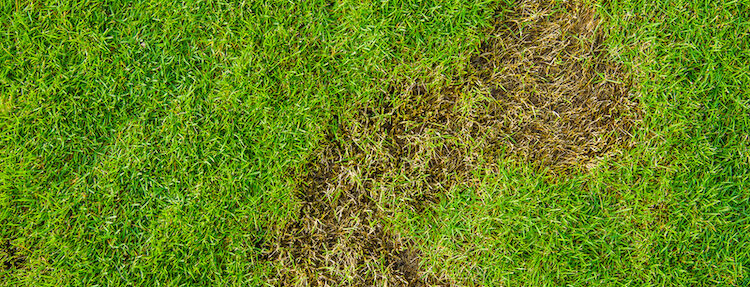
Brown Lawn Patches: Why they happen and how to fix them
Brown lawn patches are a pain in the neck. And there are many reasons why they occur. Read on to help identify why they happen (and how to fix them).
🌱 All important maintenance moments for your lawn during the year. Leave your email and we will send you the lawn calendar for free.
Enter your email
Receive the lawn calendar in the mail
Enjoy a green lawn all year round!

- Order by 2PM = shipped today
- 250.000+ satisfied customers!
- 60 day satisfaction guarantee
Nothing is more disheartening than raising your kitchen blind of a morning to discover brown lawn patches spreading across your turf. You may have pampered your grass (pun intended) like royalty, only for it to repay you in dying spots offending your eyes.
- What causes brown lawn patches?
- Brown lawn patches: drought
- Brown lawn patches: burns
- Brown lawn patches: ants
- Brown lawn patches: over-fertilisation
- Brown lawn patches: cat and dog pee
- Brown lawn patches: cranefly/leatherjackets
- Brown lawn patches: chafer grubs
- Brown lawn patches: acidic soil
- Brown lawn patches: lawn diseases
- How to treat brown patches in your lawn – 6 expert tips
- FAQs
And while drought is often the most obvious cause, there are many reasons why your lawn could take a turn for the worst — from diseases and fungi to cat pee.
This article explores the many causes of brown lawn patches, helping you get to the bottom of this very annoying condition. I’ll help you determine the cause AND the solution.
Grab a brew, and put your feet up. This may be a bumpy ride.
What causes brown lawn patches?
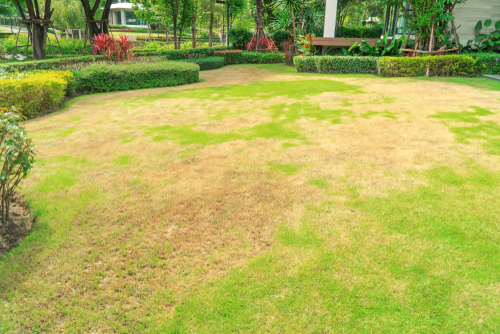
Well, isn’t that the million-dollar question? Brown lawn patches are incredibly common, and — luckily — identifying the cause is relatively straightforward.
And once you’ve addressed the issue, your lawn should return to its former splendour.
Brown lawn patches: drought
Drought is often the most obvious cause of brown spots within your lawn. And the most obvious answer could be to water your soil. But if you have a hosepipe ban, that’s not the most straightforward fix.
How to identify drought damage

Large patches of your lawn go yellow or brown, spreading outwards from a central stem into withered, shrivelled stalks, dry to the touch.
How to remedy drought damage
Oddly, drought damage can occur even when there isn’t a drought – often due to soil so heavily compacted that water runs off the surface rather than sinks into the earth. In this case, aerate your soil thoroughly, especially where brown patches appear.
On the other side of the spectrum, dry soil that has baked in the sun for weeks on end could become hydrophobic, meaning it repels water. In this case, aerate and scarify the area for thatch and dead grass, then water well with rainwater (if possible) and a splash of washing-up liquid. Yes, you read that correctly — the washing-up liquid combats the resins that cause hydrophobia.
Water your lawn
Wherever you can, watering your lawn should help revive your thirsty lawn. Water daily and always in the morning to prevent fungi. If humidity is low, water a little in the evening.
However:
Daily watering is a short-term solution. However, in the long term, water your lawn generously but less often. Overwatering makes the roots lazy.
Watering less frequently forces your grass’s roots to reach deeper into the soil to access moisture – improving future drought resistance.
Check out our expert’s guide to watering your lawn for more information.
Brown lawn patches: burns
Burns occur when your lawn’s moisture is exposed to blistering sun. This can be the internal moisture of the grass blade or external moisture from watering at the wrong time of day.
The most common cause of burnt grass is midday watering, which means that your grass is wet during the hottest part of the day. Water in the morning so the grass blades can slowly dry before the fiercer afternoon sun kicks in.
But if you’re experiencing scorching in the shade, it could be due to a garden ornament reflecting the sun’s rays onto the turf. Move the decoration if possible.
Also, remember that mowing slices the grass blade, leaving an open wound. And midday mowing exposes that wound to the sun, thus leaving scorched tips that could spread down into the stem.
How to identify burn damage
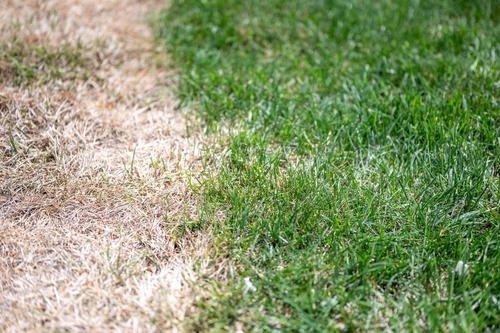
Scorching is less likely to manifest in circles, although it depends on what is causing the burns. Scorching results in dry, crispy grass and tends to occur in large patches or even across the entire lawn. You might notice less or no scorching on shaded areas of your turf.
How to revive scorched grass
It could be that scorching permanently damages the grass plant. So, changing your watering schedule might not solve the problem. Try that first, but if it doesn’t work, try this:
- Rake out the dead grass
- Overseed
- Water (at the right time of day)
Brown lawn patches: ants
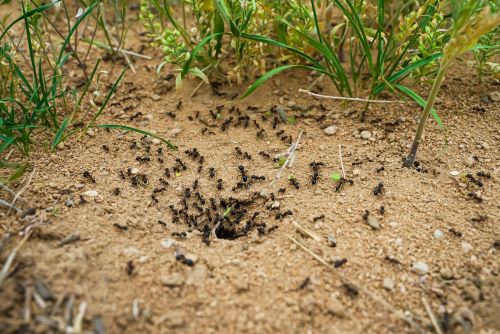
Garden ants can be beneficial because they aerate and loosen the soil and feed on some of the pests, such as leatherjackets, that cause brown spots on your lawn.
However:
Black ants harvest aphids in little lawn farms to feed on the honeydew the aphids produce. And while the honeydew gives the ants a tasty snack, it promotes lawn diseases that can cause brown spots.
So, it’s a proper win-lose situation.
How to solve brown patches caused by ants
The old-fashioned way to tackle an ant infestation was to pour boiling water into the nest. But — hey — we’re all living things, and we share the earth, so perhaps ant genocide isn’t the fairest way to tackle brown lawn patches.
There are many humane ways to tackle ant infestations if they affect the appearance of your lawn. Check out our article about tackling ant infestations for kinder ways of relocating an ant nest or dealing with the problem.
Brown lawn patches: over-fertilisation
Stop the press: yes, you CAN over-fertilise your lawn.
I recommend fertilising your lawn three-to-four times a year — no more. Over-fertilising causes various problems, from over-rapid growth to brown lawn patches. This is because fertilisers have a high concentration of salts — in the correct amounts, those salts enrich your soil, improving the roots and the vitality of your grass plants.
Check out our expert’s guide to fertilising your lawn for the lowdown on effective lawn feeding.
What does over-fertilisation look like?
Fertiliser burn generally affects the whole lawn rather than patches, so if you’ve recently fertilised your turf and the blades have withered and turned brown, it could be chemical scorch.
How to avoid over-fertilising your lawn
The best recommendation is always to obey the dosage information on the pack. If you’re using a slow-release fertiliser, such as MOOWY’s All-Round Fertiliser — this gently releases feed into the soil over time, helping avoid the possibility of burnt grass.
Activate your slow-release feed with water — a gentle spray gently discharges the fertiliser into the soil. Or scatter your slow-release granules just before the rain.
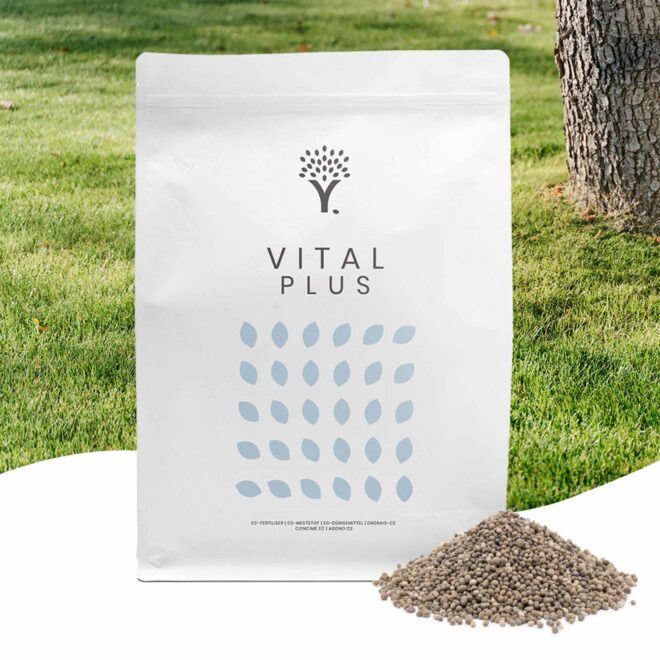
- All-year formula
- Turns your grass deep green
- Long-acting: works for up to 60 days
Brown lawn patches: cat and dog pee
Cat and dog urine contain high nitrogen levels, so if you have already fed your lawn, pet wee can overdose the grass and turn it brown.
Of course, we’re not suggesting letting your pets fertilise your lawn rather than using a specialised fertiliser. After all, animals often favour one spot in the garden, which isn’t great for nitrogen distribution across the entire lawn surface.
Animal pee sinks into the soil, damaging your lawn’s roots — and, over time, it can cause your grass plants to die. So, in a way, cat and dog pee has the same effect as over-fertilising your lawn.
How to avoid pee-induced lawn damage
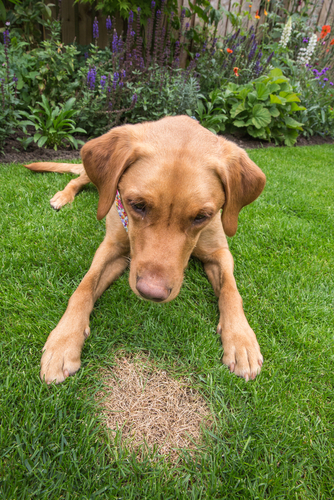
Of course, your four-legged friend needs to “use the bathroom” (my favourite American euphemism for weeing). And you can hardly blame them for ruining your lawn!
So, if you find that they always use the same spot, pour plenty of water on the patch after they’ve done their business. This dilutes the salts and washes them deep into the soil.
Help! The neighbour’s cat is using my garden as a toilet!
However, it may be that neighbouring cats are visiting your garden and using it as a public convenience, and this is where it gets complicated.
In this case, you could plant plants that deter cats, such as lavender, rosemary, curry plant, lemon balm, or even a strongly-scented geranium. These plants give off a heady scent that humans love but cats hate!
Fill your garden with beautiful herbal botanicals, and cats will stay away.
Brown lawn patches: cranefly/leatherjackets
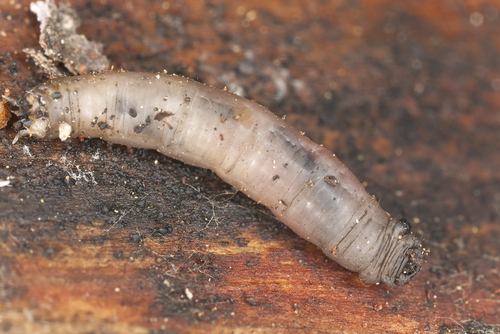
Adult craneflies (aka daddy longlegs) are harmless insects with short lives. But their larvae (commonly referred to as “leatherjackets”) are particularly bad for your lawn because they grow underground and kill your grass plants’ roots.
What does leatherjacket damage look like?
Leatherjackets grow in the root zone of your lawn — you’ll know they’re there because:
- You’ll notice birds pecking at your lawn
- You’ll discover circular yellow or brown patches dotted around your lawn
How to tackle leatherjackets in your lawn
Keep your lawn short during August and September because craneflies prefer to lay their eggs in longer grass.
It’s possible to use chemical pesticides to destroy the cranefly larvae in your soil, but these chemicals can be hazardous to both humans and pets. So, I recommend the greener alternative: use nematodes.
Find out more about how to tackle cranefly larvae in your lawn.
Brown lawn patches: chafer grubs
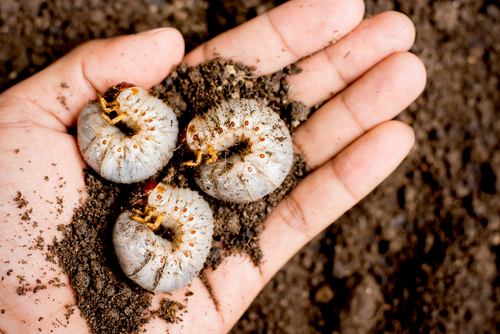
Chafer grubs are the larvae of the chafer beetle – a leaf-beetle that spreads widely in UK gardens. While adult chafer beetles aren’t particularly harmful to your lawn, they will happily chomp their way around your veg patch.
However, like leatherjackets, chafer grubs cause circular brown patches of dead grass across your lawn’s surface as they eat their way through your grass’s roots.
How to tackle chafer grubs in your lawn
Like leatherjackets, if you spot birds pecking at your lawn, you could have a chafer grub infestation.
Tackling chafer grubs is similar to combatting leatherjackets — use nematodes, which are greener than chemical pesticides.
Check out our expert’s guide to tackling chafer grubs in your lawn.
Brown lawn patches: acidic soil
Acidic soil can turn your grass yellow or brown. So, if you’re seeing large patches of brown in your lawn, test your soil’s acidity.
Ideally, grass prefers a pH level of 5.5-6.5. Any lower than pH5.5, and the soil will be too acidic for your turf to thrive.
Unfortunately, weeds love acidic soil, so if your once weed-free lawn is suddenly infiltrated with opportunistic weeds or weed grasses, lower the pH of your turf.
How do you address lawn soil acidity?
All garden soils acidify over time as a result of organic decomposition. You can slow the process by regularly removing the thatch layer underneath the grass line by raking or scarifying.
The easiest way to tackle soil acidity is to add lime, which neutralises the lawn’s soil and turns your grass bright green simultaneously — win-win.
Check out our expert’s guide to beautifying your lawn with Lawn Lime.
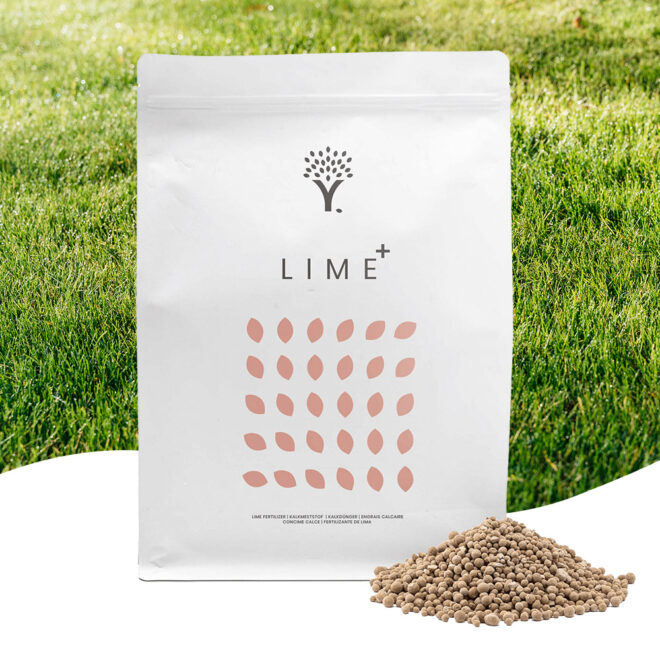
- Neutralises soil acidity
- Promotes nutrient absorption
- Turns your grass bright green
Brown lawn patches: lawn diseases
Brown lawn patches are often caused by lawn diseases, such as snow mould, red thread, and root rot.
Some lawn diseases are easier to tackle than others — check out our expert’s guide to identifying and tackling common lawn diseases.
One of the simplest ways of tackling lawn diseases is ensuring your soil drains well. Flooded lawns or permanently wet soil are particularly susceptible to disease and fungi, so aerate your lawn earth regularly to boost drainage.
How to treat brown patches in your lawn – 6 expert tips

While you should always try to identify the causes first, there are some common ways to treat brown lawn patches. 00
1. Have a watering schedule
The key here is to avoid overwatering your lawn. Aim for a good soaking every 3-4 days, providing around 1.5cm of water each time. And if it rains, you don’t need to run the sprinkler or hosepipe.
Water your lawn in the morning — before the sun gets too hot. Avoid watering your lawn in the evening, as wet soil at night encourages moss.
2. Mow high
Over-mowing can damage your grass plants. Twice a week is the absolute maximum I recommend — once a week in the summer might be ok if it’s really hot.
Unless you have an ornamental lawn, you should avoid scalping your turf — don’t cut it too short, or your lawn will lose its energy and vitality.
Remember, grass plants need their leaves to photosynthesise. Cut too short, and you stunt your plants’ ability to feed themselves.
Never mow more than ⅓ of the grass’s length — if you want to go shorter, do it gradually over several weeks.
3. Scarify your lawn regularly
Over time, all lawns develop a thatch layer produced by decomposing organic matter, such as fallen leaves.
Thatch suffocates your lawn’s roots, so aerate your soil regularly and scarify at least once a year.
4. Keep your lawn fertilised.
Choose the correct type of fertiliser for your lawn.
How?
Well, select a fertiliser with the right NPK content for your grass.
What what what?
NPK refers to the levels of nitrogen (N), phosphorus (P), and potassium (K) in your fertiliser. Nitrogen offers healthy, green foliage; phosphorus strengthens the roots, and potassium encourages healthy growth.
Your lawn needs different nutrients at different times of the year. Check out our expert’s guide to NPK fertilisers (and how to choose the right one).
5. Ensure effective soil drainage
Poor drainage leads to compacted soil (and vice versa), creating an unhealthy environment that stunts lawn growth.
Stick a screwdriver into your lawn soil — if it slides in easily, your soil is probably fine. Your lawn is probably compacted if it’s a struggle to dig into the earth.
The solution is relatively quick and straightforward: aerate your lawn at least twice a year to maintain its drainage.
6. Maintain your lawn!
The best way to keep your lawn in shape is to maintain it regularly. A healthy lawn will present fewer problems, so keep on top of your lawn care tasks.
Sign up for MOOWY’s weekly newsletter — we’ll keep you up-to-date with your lawn care tasks throughout the year. And keep an eye on our blog — we publish new lawn care tips and hacks every week.
Any questions?
We hope we’ve answered your questions about brown lawn patches in your lawn, but if you have any questions, please don’t hesitate to get in touch.
We love hearing from our customers, and we’ll get back to you as soon as we can.
Thanks for reading.
FAQs
First, diagnose the problem. Brown lawn patches could be caused by drought (in which case, watering is a good starting point). However, brown lawn patches can occur as a result of various problems, such as pests, over-fertilising, even over-mowing. Mow regularly (but not too short), water regularly (but not too much), fertilise regularly (but not too much!).
Brown lawn patches can be caused by drought, over-fertilising, pests, sunburn, cat or dog pee, acidic soil or disease. Check out our article to help identify the cause of your brown patches, and find out how to fix them.
It could recover, but it depends on the cause – you need to address the cause in order to solve the problem. If your grass doesn’t grow back, simply scarify (or rake) the area, removing all the dead grass, overseed with a high-quality lawn seed, and water. New grass will emerge within two weeks. Easy.
-
How to Level a LawnThe secret to a beautiful garden is levelling the lawn. What's the best way to go about it? We are sharing our best tips!Read more
-
Identifying and controlling millet in your lawnMillet is an edible crop, loved for its edible, highly nutritious grain. However, you may find millet in your lawn, spread through bird droppings. Find out how to identify and control millet in your lawn.Read more
-
How to Design Your Dream East-Facing GardenAn east-facing garden poses a few extra challenges you don't get with a south-facing garden. However, choose the right plants and lawn type, and your east-facing garden will thrive!Read more
-
Removing Old Turf: why, when, and how?How to remove turf – it's a fairly straightforward task, but it's physically challenging. Find out how to remove turf and what to do next!Read more
-
Everything You Need to Know About Lawn SandingLawn sanding can help compacted soil take in more nutrients. Find out how and why you should add lawn sand for spectacular results to all lawns.Read more
-
How to stop birds from eating grass seed: handy hacks and tipsBirds eating grass seed is a bit of a nightmare, leaving a patchy lawn and wasting your cash. Find out how to deter them!Read more
-
How to Restore An Over-Fertilised Lawn: A Step-by-Step GuideProbably the least-acknowedged cause of yellowing grass! Too much of a good thing is bad! Find out if you're over-fertilising your lawn.Read more
-
The most common types of grass in the UK | MOOWYIs your grass right for your garden? It seems like a strange question, but there could be reasons why your lawn isn't as beautiful as it could be! Read on.Read more
Leave a comment
Your answer will be displayed on the site and the interested party will be notified by email.
Leave a comment
Have a question or want to share your experience? Leave us a comment.

- Order by 2PM = shipped today
- 250.000+ satisfied customers!
- 60 day satisfaction guarantee

- Order by 2PM = shipped today
- 250.000+ satisfied customers!
- 60 day satisfaction guarantee

🌱 All important maintenance moments for your lawn during the year. Leave your email and we will send you the lawn calendar for free.
Enter your email
Receive the lawn calendar in the mail
Enjoy a green lawn all year round!





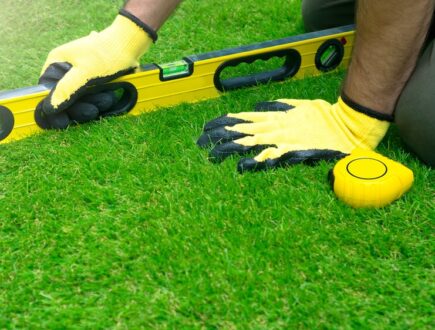
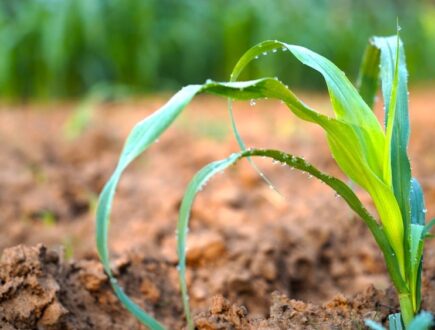

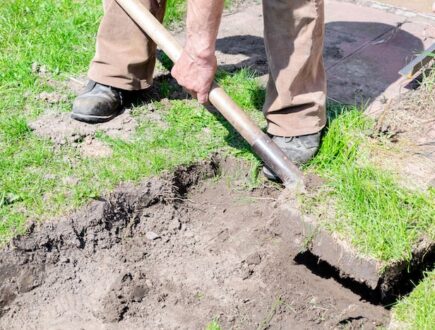
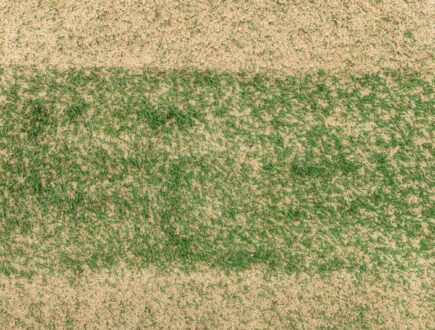
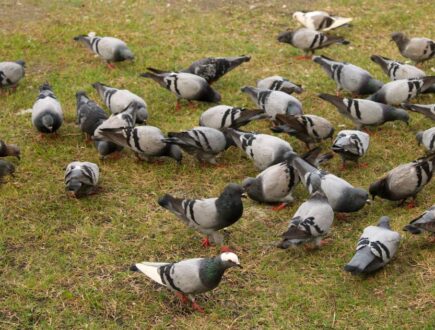
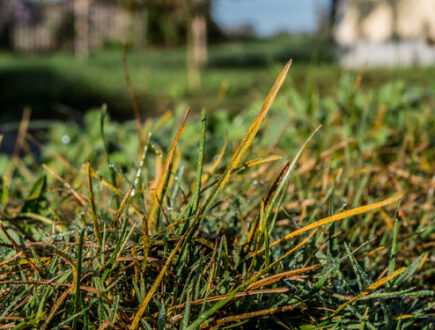










Comments (0)
There are no comments yet. Well then, what are you waiting for to
Be the first to write your comment!inaugurate this pretty page?
Do you have some comments?